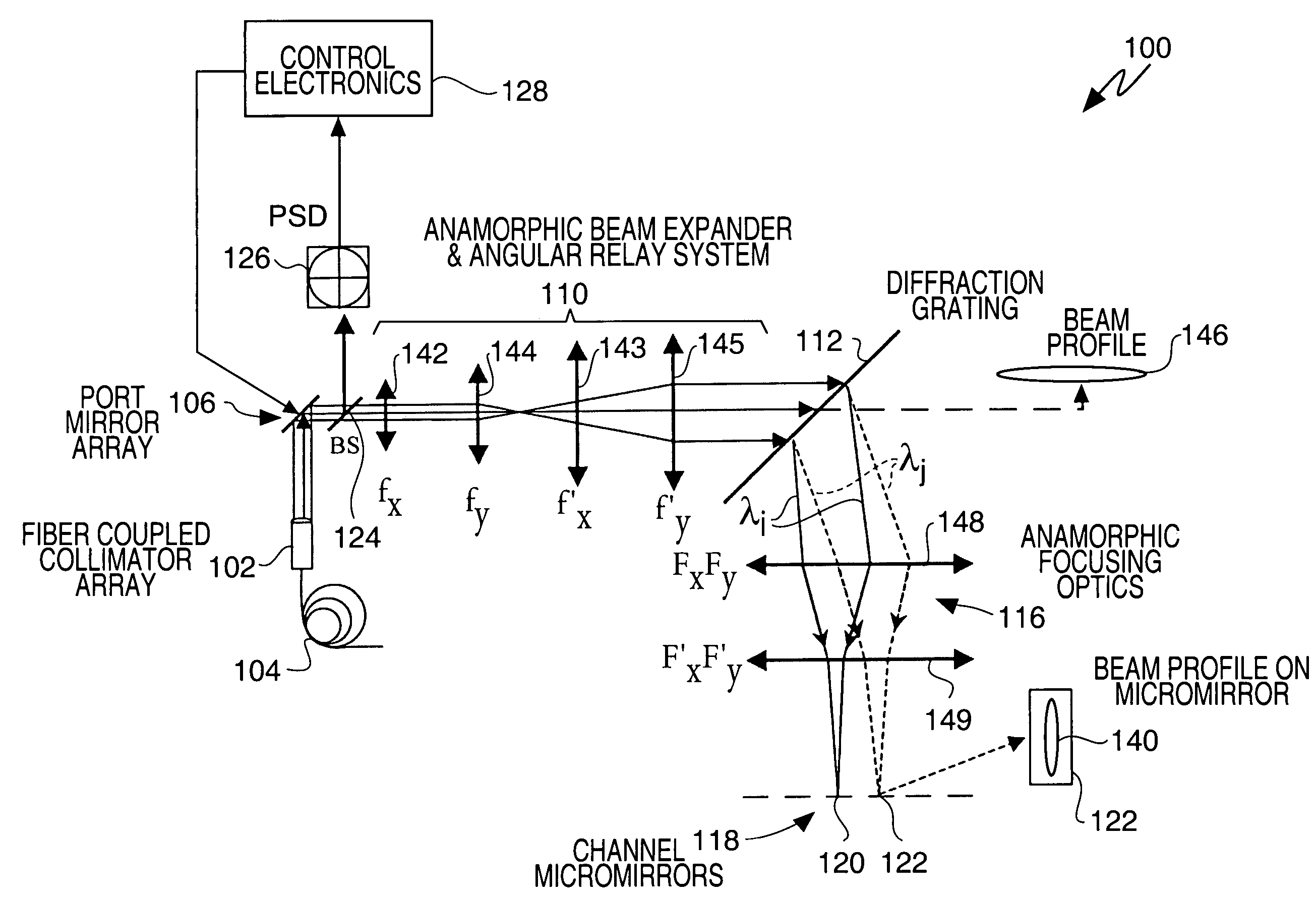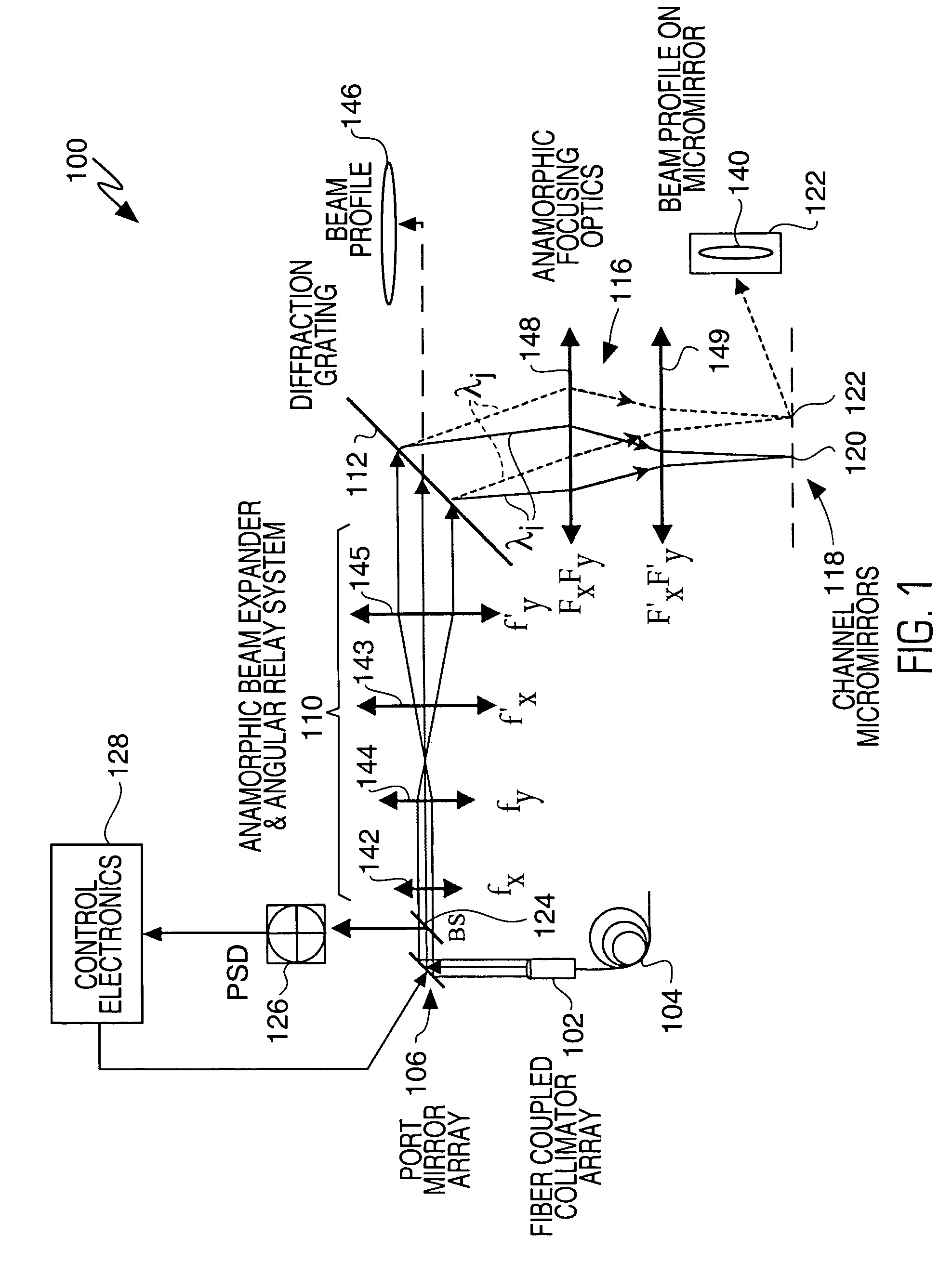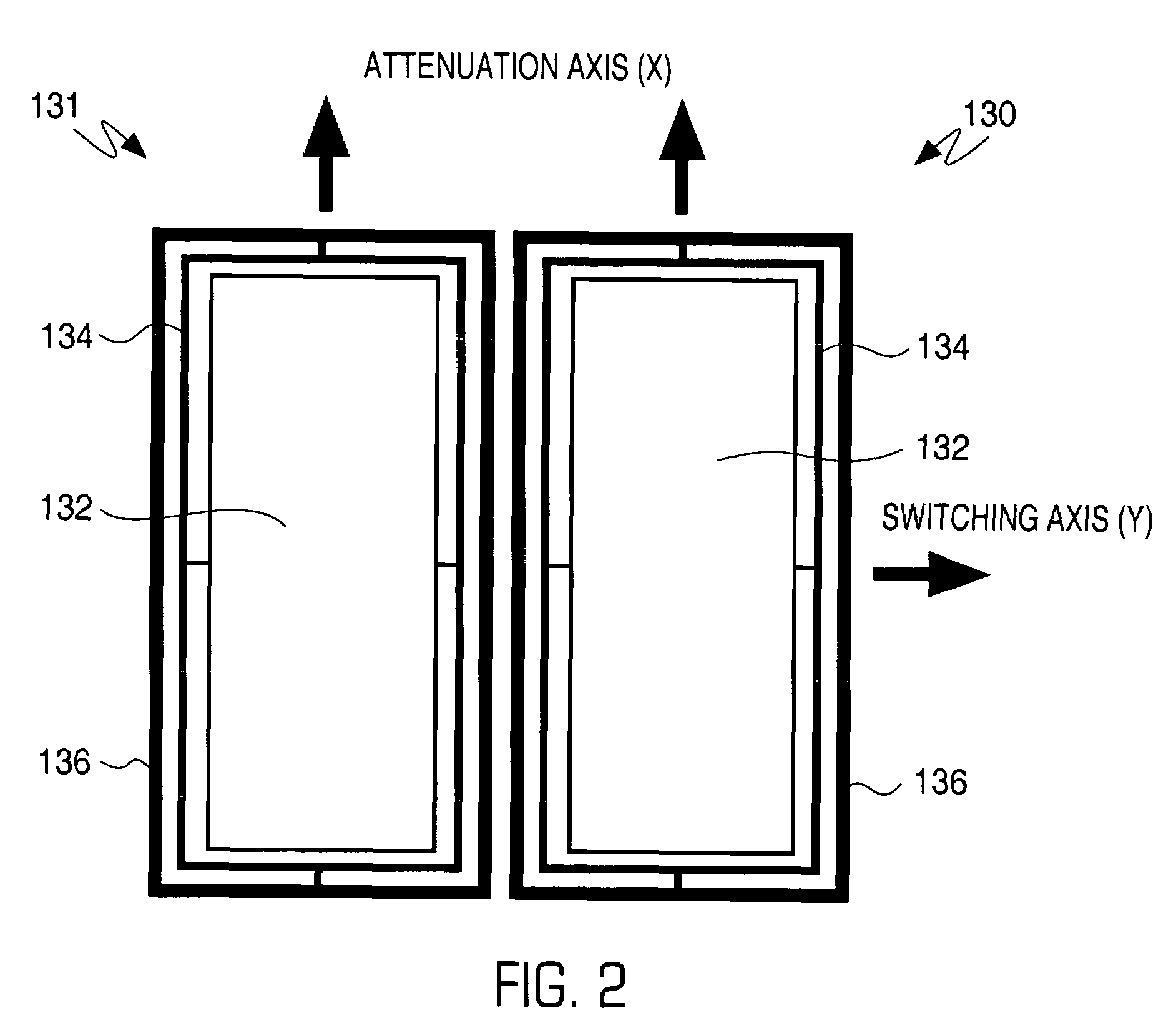Optimized reconfigurable optical add-drop multiplexer architecture with MEMS-based attenuation or power management
a technology of add-drop multiplexers and optical add-drop multiplexers, which is applied in the field of optical communication systems and methods for wavelength division multiplexed (wdm) optical networks, can solve the problems of preventing optimization of key optical parameters of the system, such as passband, and the inability to easily control the spot size on a channel micromirror, so as to achieve the effect of optimizing optical and mechanical characteristics
- Summary
- Abstract
- Description
- Claims
- Application Information
AI Technical Summary
Benefits of technology
Problems solved by technology
Method used
Image
Examples
Embodiment Construction
[0029]This invention is particularly applicable to wavelength selective switches (WSS) as used, for example, in reconfigurable optical add-drop multiplexers (ROADMs) permitting dynamic network reconfiguration and enabling management of the power or attenuation of individual spectral channels of a multi-wavelength (multi-channel) optical signal, such that signals can be readily added to or dropped from the network. It will become apparent, however, that this is illustrative of only one utility of the invention
[0030]FIG. 1 is a diagrammatic view that illustrates the architecture of a portion of a wavelength selective switch 100 in accordance with the invention. One or more wavelength selective switches having an architecture as shown in the figure and configured as ADD or DROP modules, may be combined in a ROADM at a node of a wavelength division multiplexed (WDM) optical network, for example. As shown, WSS 100 may comprise a fiber collimator array 102 which provides a plurality of in...
PUM
 Login to View More
Login to View More Abstract
Description
Claims
Application Information
 Login to View More
Login to View More - R&D
- Intellectual Property
- Life Sciences
- Materials
- Tech Scout
- Unparalleled Data Quality
- Higher Quality Content
- 60% Fewer Hallucinations
Browse by: Latest US Patents, China's latest patents, Technical Efficacy Thesaurus, Application Domain, Technology Topic, Popular Technical Reports.
© 2025 PatSnap. All rights reserved.Legal|Privacy policy|Modern Slavery Act Transparency Statement|Sitemap|About US| Contact US: help@patsnap.com



